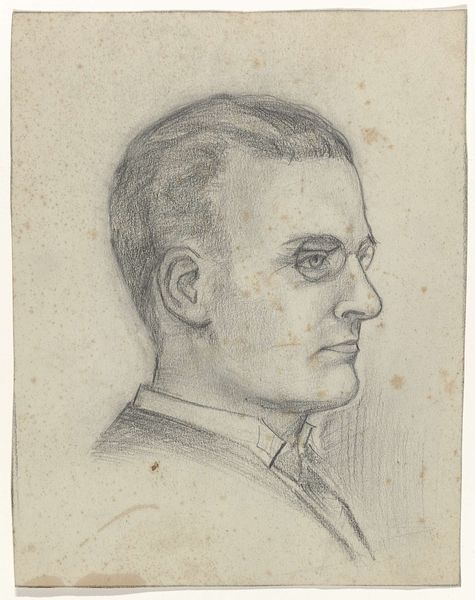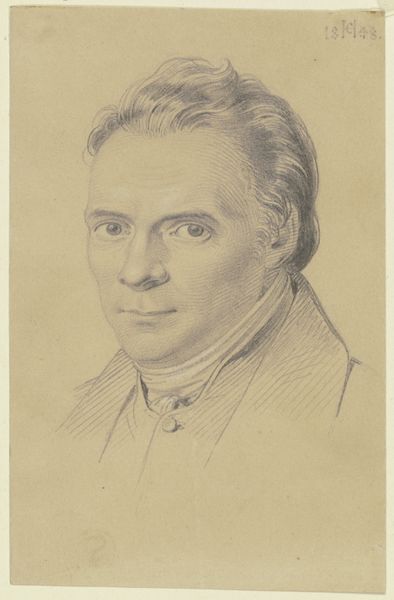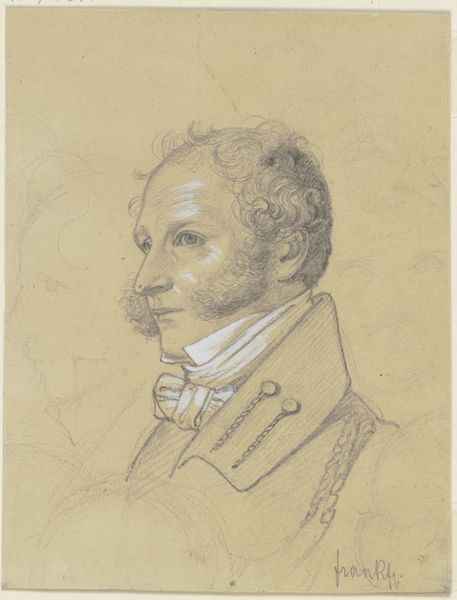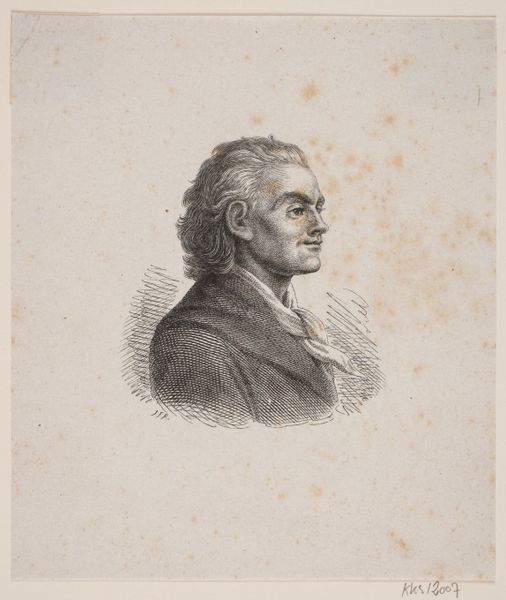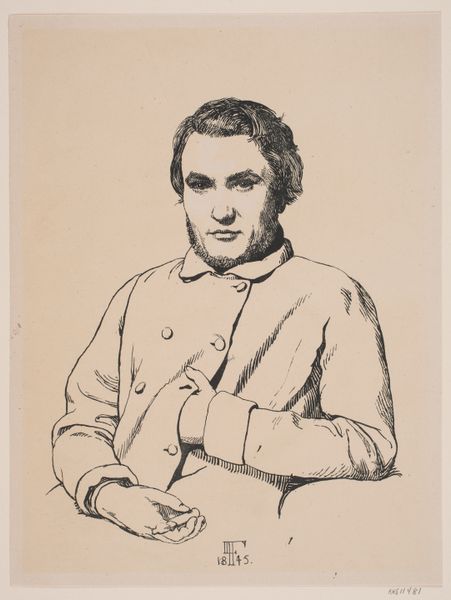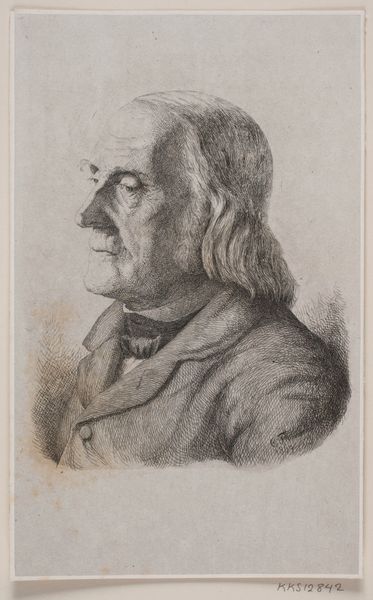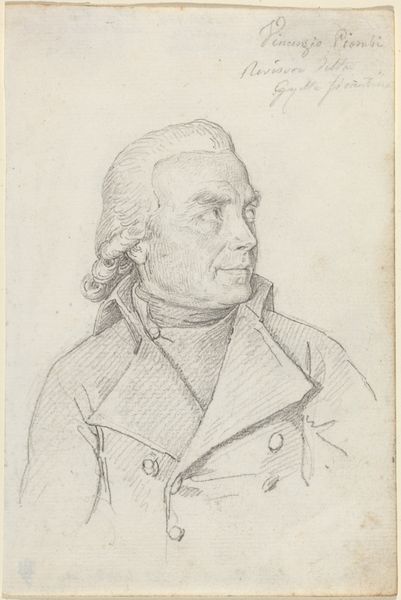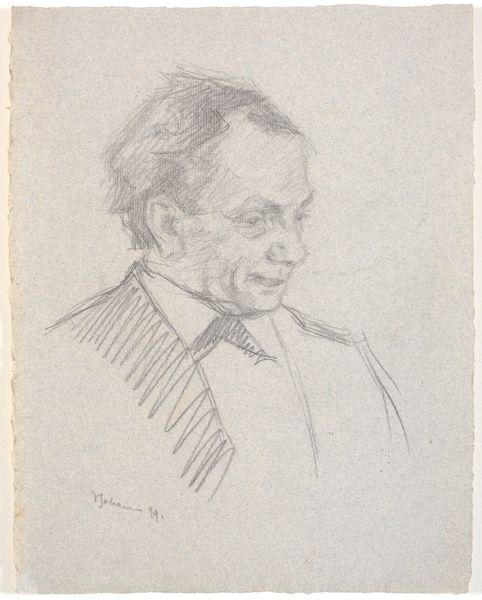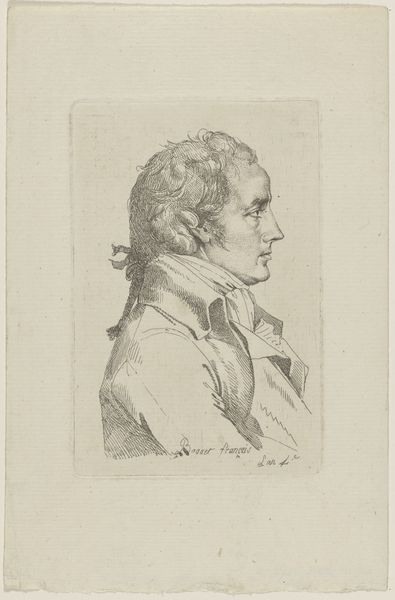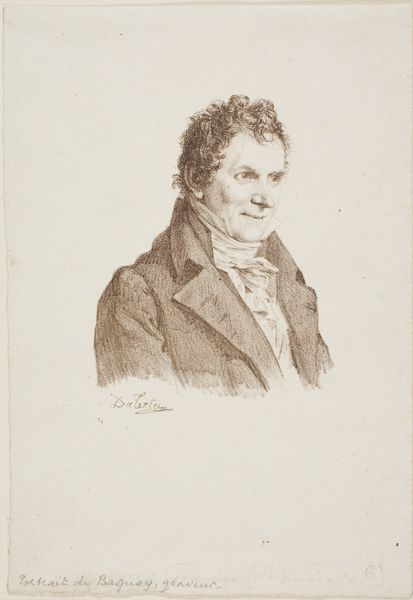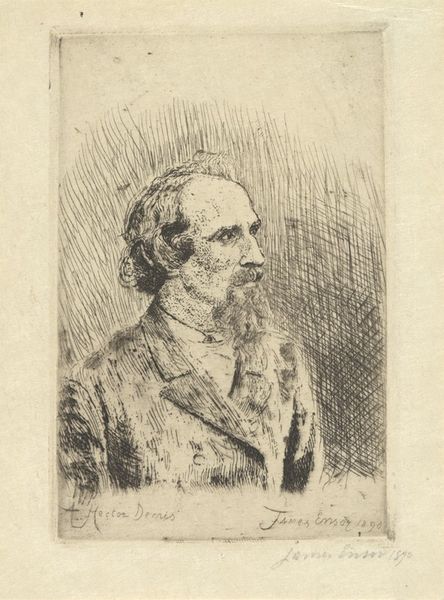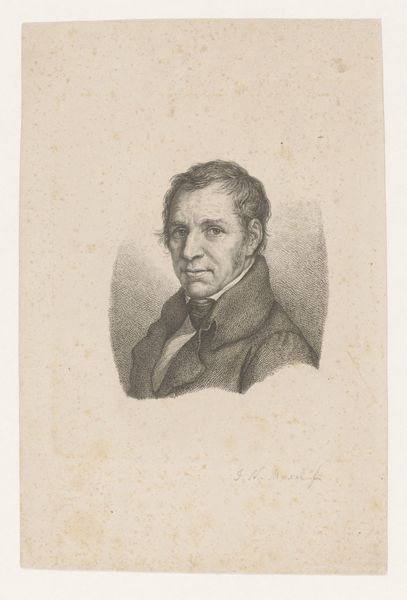
drawing, pencil
#
portrait
#
drawing
#
pencil
#
portrait drawing
#
pre-raphaelites
Dimensions: overall: 11.6 x 11.4 cm (4 9/16 x 4 1/2 in.)
Copyright: National Gallery of Art: CC0 1.0
Curator: This is William Holman Hunt's drawing, "The Artist's Father, William Hunt," created before 1856. It's rendered in pencil, a rather intimate medium for a portrait. Editor: It feels remarkably honest, almost austere. There’s a vulnerability to the sitter. It's far removed from the idealized portrayals often commissioned during that period, particularly within bourgeois circles. Curator: Absolutely. Consider the context—Hunt was deeply involved with the Pre-Raphaelite Brotherhood. Their commitment to truth and naturalism is evident here. You can observe the subtle play of light and shadow, the almost photographic attention to detail in his father's face and wisps of hair. Do you observe the psychological weight in his furrowed brow, as if he is deeply concerned? Editor: I do. It feels less like a celebration of status and more like an exploration of character. It would be easy to see a Victorian father through a lens of stern authority, but this suggests introspection, perhaps even a shared vulnerability between father and son. Do you feel the social constraints typical in that period in such a portrait? I find that is refreshingly defied in his simple tie. Curator: It really reframes our perception of Victorian patriarchy, doesn't it? By focusing on the individual rather than the social role, Hunt is subverting expectations, and emphasizing the deeper human bond. The artist invites us to confront aging, reflection, and a very personal moment in time. I feel the drawing defies convention in many symbolic ways, reflecting more the interior world than simply the surface. Editor: Indeed. It’s a quiet, powerful piece. This drawing highlights how even seemingly conventional forms like portraiture could be sites of artistic innovation and social commentary during the Pre-Raphaelite movement. How we interpret such art has shifted and deepened. Curator: This exploration reminds us that what remains with an audience, regardless of changing interpretation, lies beyond the medium or symbols. We get the weight and the substance of the man within the artwork. Editor: Agreed. A touching image which captures humanity in an age marked often by staid formalism.
Comments
No comments
Be the first to comment and join the conversation on the ultimate creative platform.


